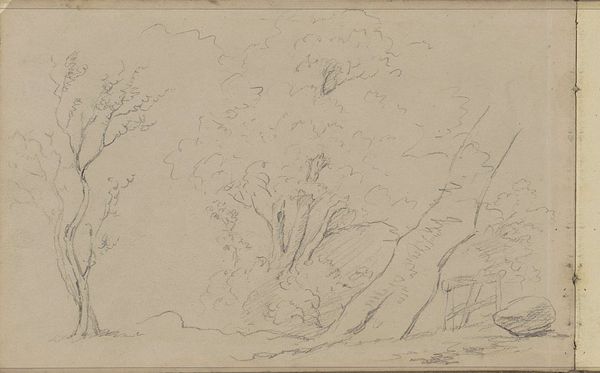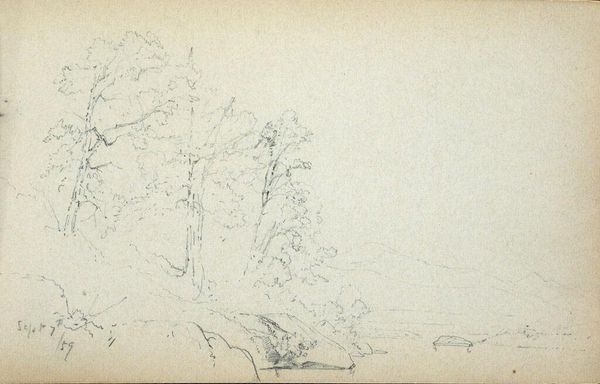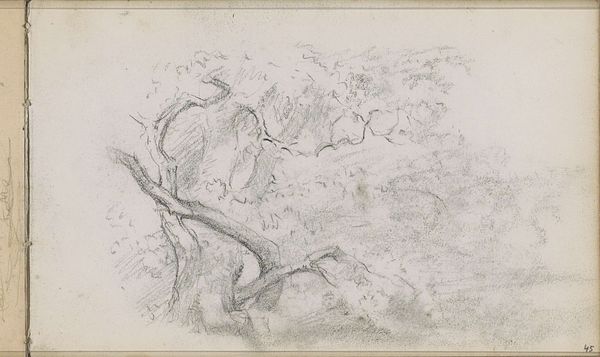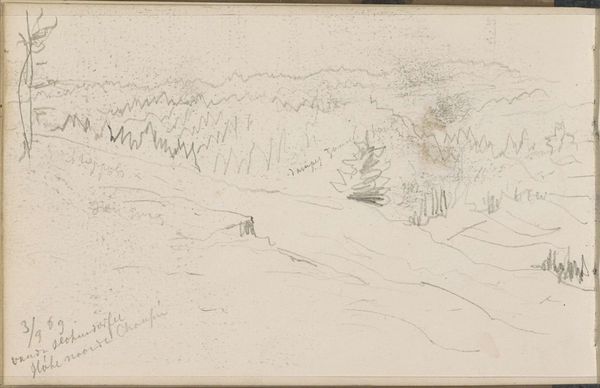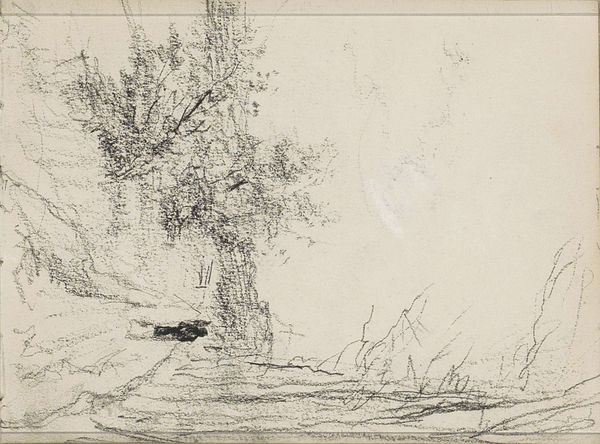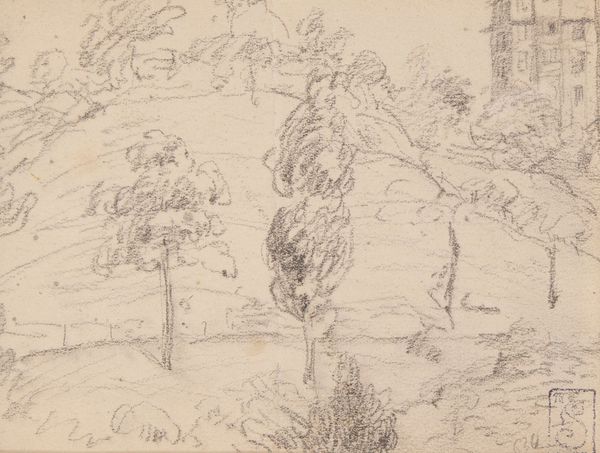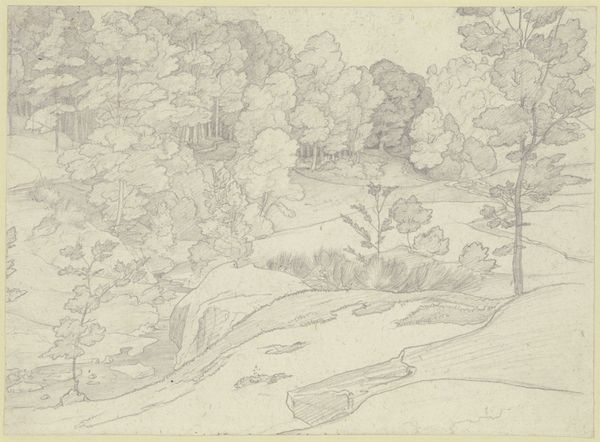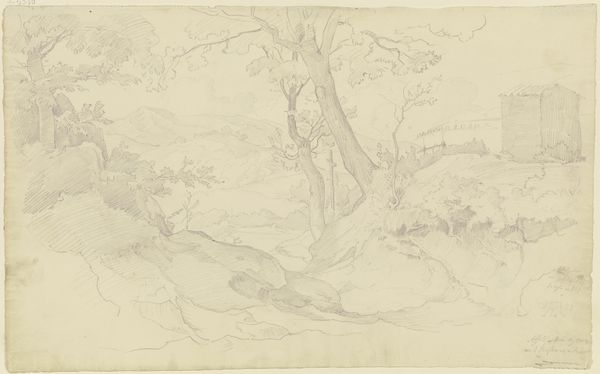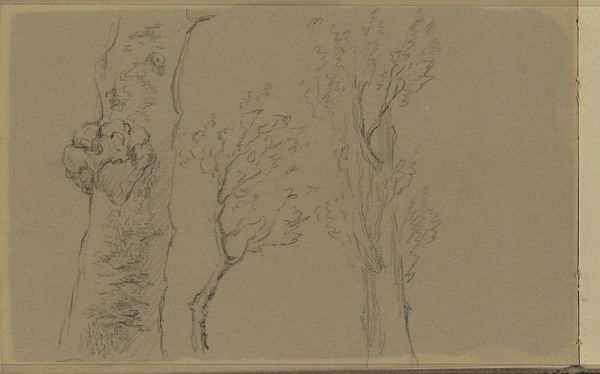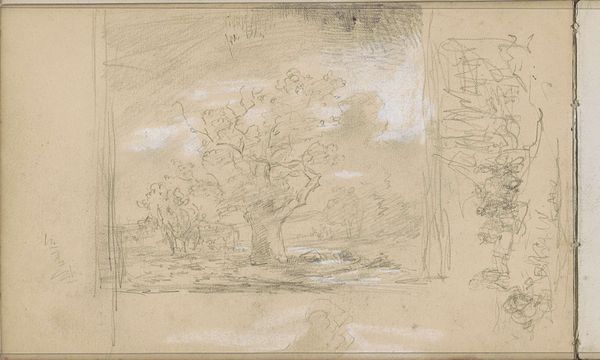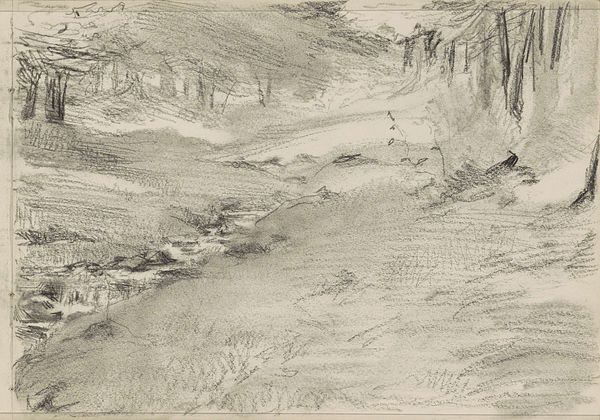
drawing, pencil
#
drawing
#
dutch-golden-age
#
landscape
#
pencil
#
realism
Copyright: Rijks Museum: Open Domain
Curator: This subtle, seemingly unfinished drawing from 1871 is entitled "Bomen bij de Plantage," or "Trees near the Plantation" and was created by Johannes Tavenraat. Editor: My first impression is one of quiet observation. There’s a dreamlike quality to the pencil work; the almost blurry texture evokes the feeling of seeing this landscape through a mist. Curator: Tavenraat was a product of his time; in Dutch art historical terms we consider him of the late Romantic era in that the rise of the public art market had created something of a vacuum into which many technically sound but stylistically meandering artworks arose, often trading on well-worn, previously popular genres like landscapes. Editor: I'm fascinated by the way the artist has handled the material. Looking closely, you can see the pressure variations in the pencil strokes, the deliberate blurring. Do you think the paper itself had a role to play in the drawing’s outcome? Was it handmade? Was it sourced locally? Curator: Undoubtedly, the artist was working within constraints imposed by available materials and his patronage, if he even had any, although there is little evidence of Tavenraat developing close relationships with particular wealthy buyers, galleries, or other components of a more modern professional art world. The landscape as a marketable form, I suspect, also helped make his images accessible in a period of national introspection about Holland’s Golden Age. Editor: So the appeal to the public would lie not in technical prowess alone but also perhaps in its accessibility? The choice of something familiar, like trees, rendered in a realistic manner but made affordable through this technique, may suggest an attempt to bridge the gap between art and everyday life. Curator: Precisely, and in a very accessible format given that the dimensions were presumably constrained by standard commercially available paper sizes. While not overtly political, these kinds of representations had social and historical significance during the 19th century’s reshaping of Europe’s nation states and empires. Editor: Thinking about materiality helps me appreciate how even seemingly simple landscapes were embedded in very specific social and economic circumstances. Curator: And viewing artworks like this provides some interesting insight into 19th century society through this kind of social lens, as we understand the types of art consumed during that era in the broader context of material limitations, technological innovations and widespread shifts in Dutch culture.
Comments
No comments
Be the first to comment and join the conversation on the ultimate creative platform.
